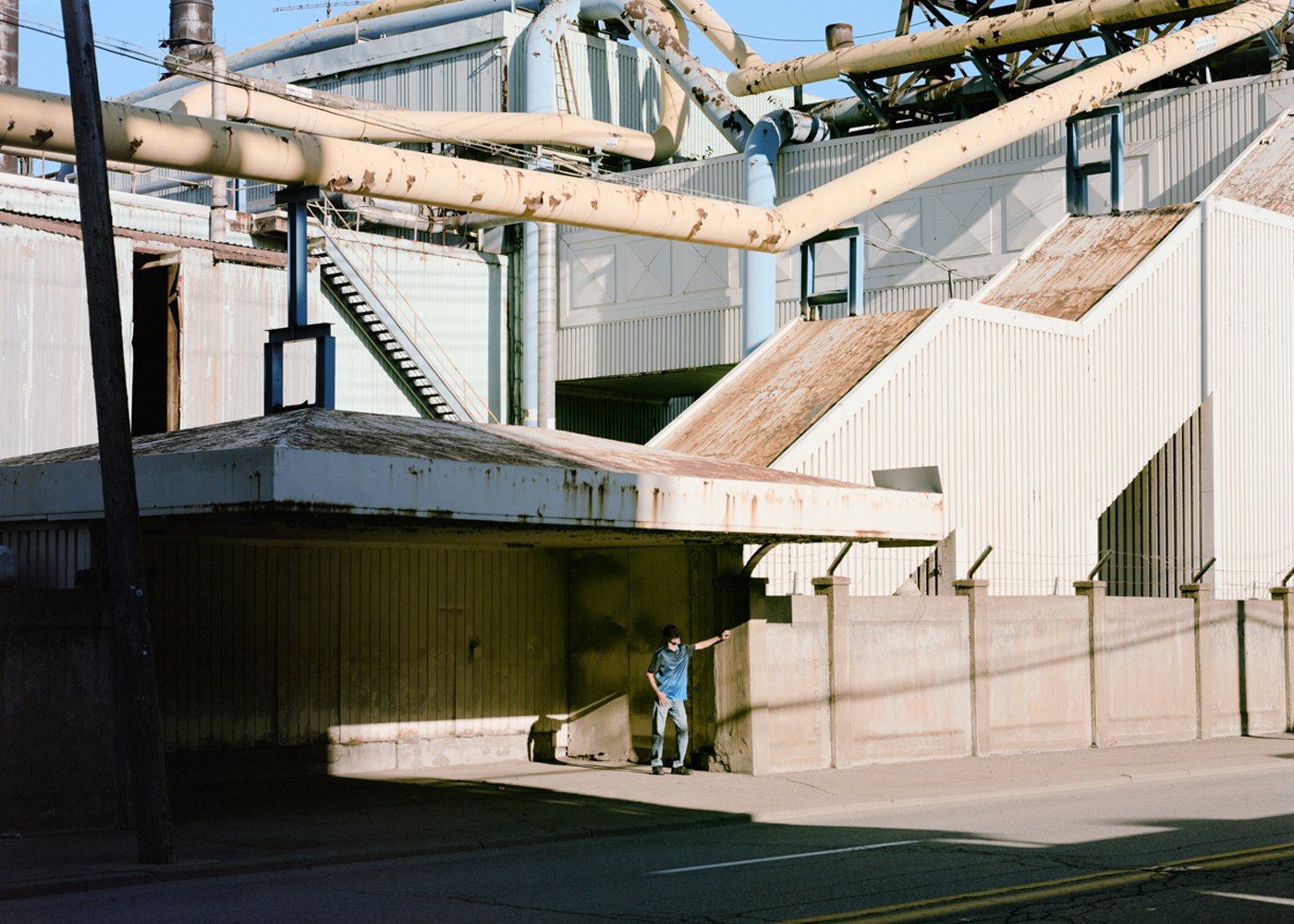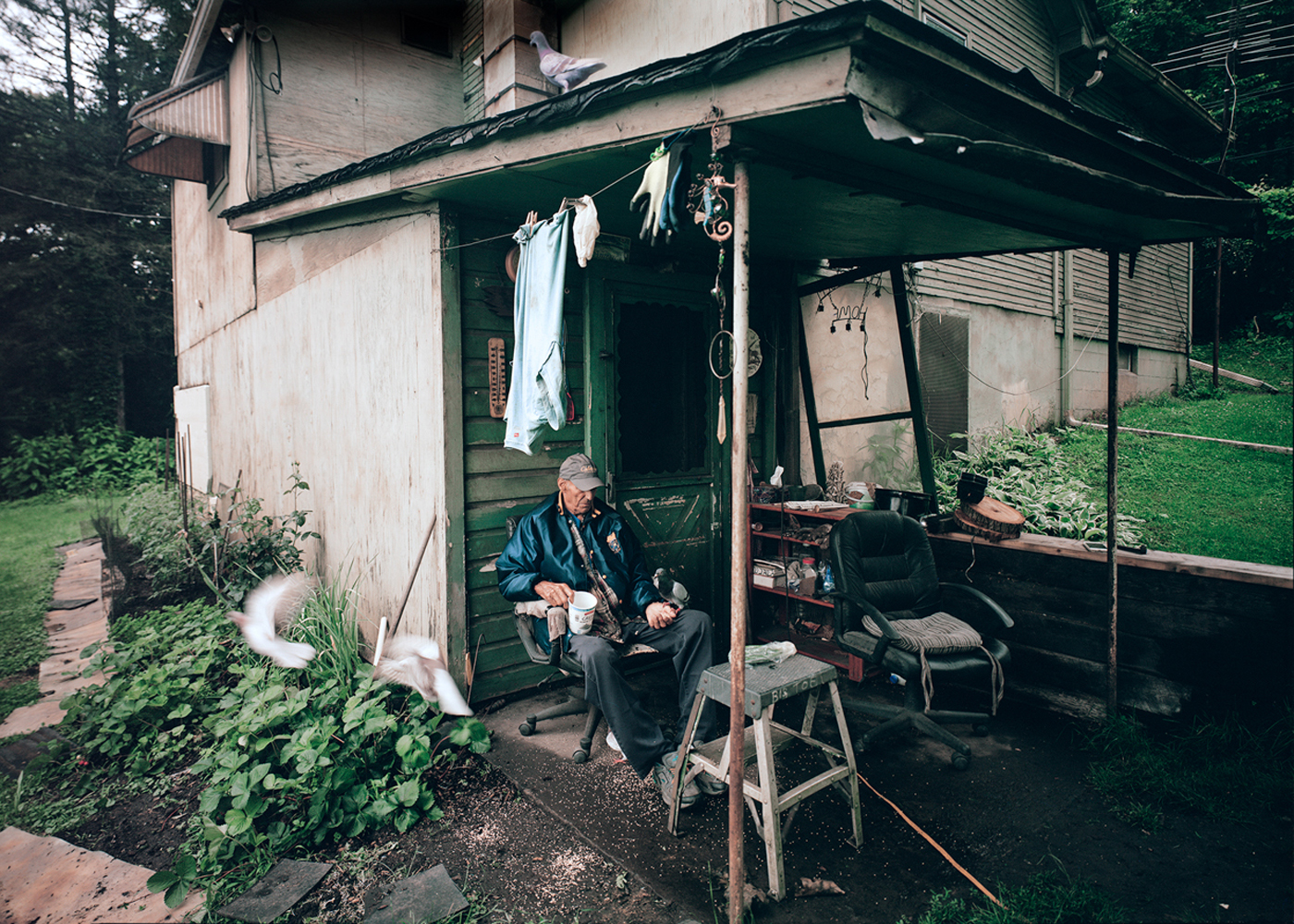






Artist's Statement
David Bernstein
Archival digital prints from scans of 5x7 negatives.
In 1919, Sherwood Anderson published Winesburg, Ohio, a book of intertwined short stories about a fictional town where characters experience the collapse of social institutions that defined small-town America. Over and over his characters search for ways to counter the alienation brought on by industrialization that was reshaping early twentieth century-America. It is the search itself, the collective struggle to connect, that allows Anderson’s characters to imagine themselves less isolated than they really are. It is this tension, between individual subjectivity and collective identity, that gives the book its potency.
Like those in Winesburg, the characters in my photographs search for collective experiences in this time of economic and social trauma. Masculine rituals and religious practices give a sense of identity but the question remains, how real is this manufactured social fabric? As a professionally trained historian, I am interested in the space between the lived experiences people have and the stories they and others tell about those experiences. Working with inhabitants of towns along a fifty-mile stretch of the Ohio River, I have created and photographed scenes that embody these tensions; a sort of bookend to Anderson’s stories that explores what happens when the industrialization his characters struggled to come to terms with, fails.
One of those industries was the pottery industry. Though it brands itself as “The Pottery Capital of the World,” East Liverpool, Ohio—where my project is focused—has struggled with the market-forces the pottery industry brought for over a century. As long ago as 1939, the local newspaper was writing stories about the gap between residents’ perception of the industry and its economic impact: “Five Modern Plants Employ More Workers and Produce more Ware Than 33 Shops of ‘Good Old Days,’” one headline reads. The fact that the pottery industry has never provided the economic stability the residents of East Liverpool desire has not diminished “The Potters” cultural importance.

